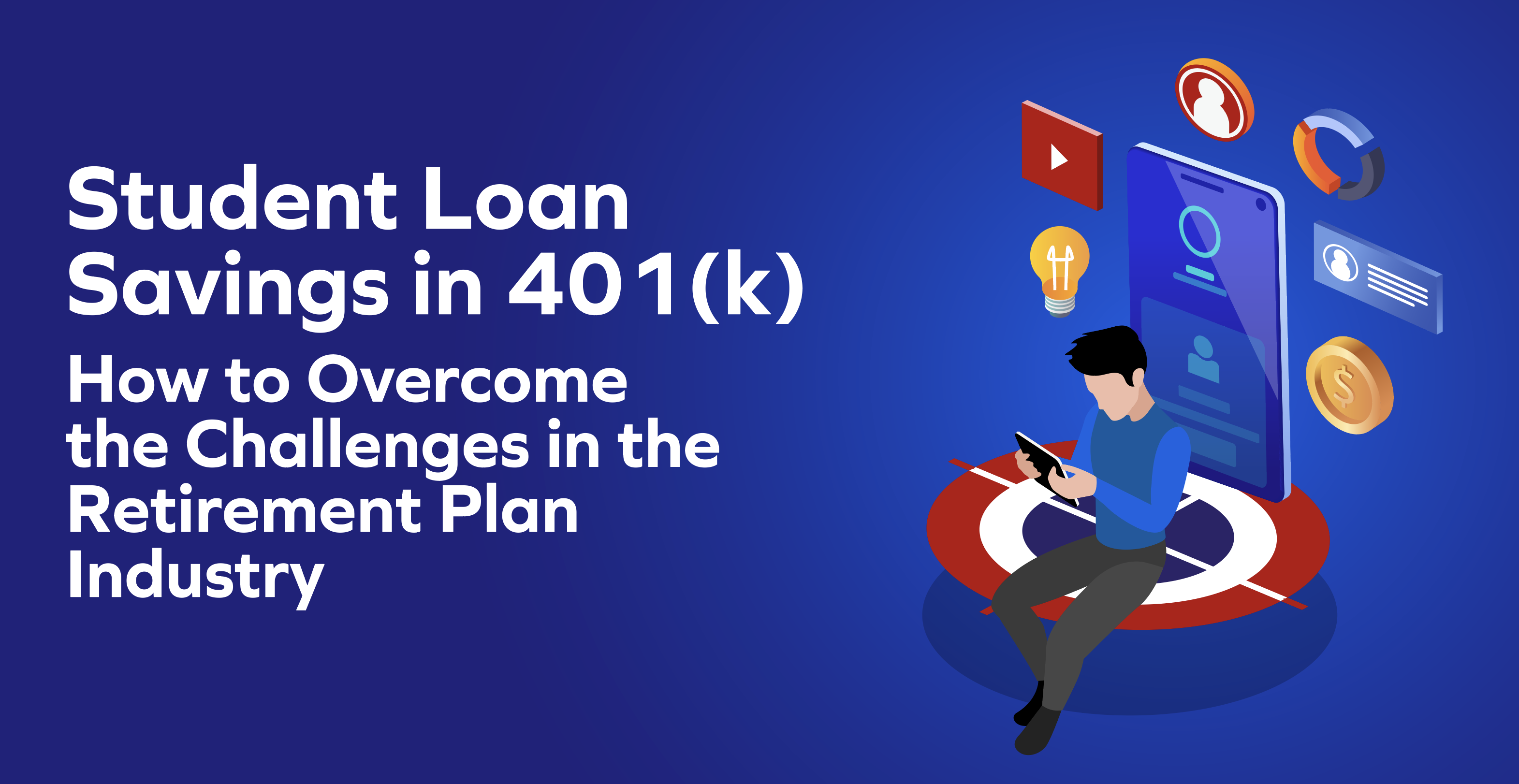
By June 2019, outstanding student loans touched USD 1.4 trillion. More than a quarter of this debt is held by millennials younger than 30 years of age. Such a heavy loan obligation among young people is likely to delay their retirement planning. Moreover, when employees do not contribute to 401(k), they also miss out on matching contributions from their employer. So, it is no wonder that 66% of millennials have not yet started their retirement savings.
To help their employees address these problems, employers are integrating student loan benefits into 401(k) plans. For instance, in 2017, health technology company Abbott proposed to amend its 401(k) plan to offer contributions towards student loan benefits for their employees. The IRS approved Abbot’s proposal. This marks the beginning of considering student loan benefit programs into 401(k) fold.
The Retirement Parity for Student Loans Act permits 401(k), 403(b), and SIMPLE retirement plans to make matching contributions to workers as if their student loan payments were salary reduction contributions. A 2019 survey found that only 4% of the respondent organizations offer some sort of student loan benefit program already, and 23% are considering such a program in the future.
While this is a welcome move, it also poses challenges for industry stakeholders such as plan providers and plan administrators.
Rules and regulations are evolving
401(k) plan administration involves multitudes of complex rules for many participants. Though the IRS has allowed student loan repayment plans to be counted within 401(k), the regulations related to this have not been formulated in full. The government is working on expanding that private letter ruling “to be more reliable” and to address non-discrimination issues.
So, it is safe to assume that new rules and amendments will be implemented regularly. This means that retirement plan providers need to frequently update their systems to provide seamless service to their clients.
Yet, technology systems are rigid
Plan providers and administrators continue to use legacy technology systems in which business logic and code are intertwined. This means that applications need to undergo code-level changes whenever a new rule needs to be implemented. However, finding the resources to make these changes is becoming difficult for most legacy applications built on mainframe systems. In a recent survey, 79% of the respondents said their top mainframe-related challenge was acquiring skilled mainframe resources.
All in all, implementing compliance changes to the technology foundation is time-consuming, error-prone and expensive.
Managing data is complex
With new products and plans come large volumes of customer data. Plan providers and administrators must ensure complete confidentiality, privacy and security of such data. This can be a challenge, given its sheer volume and diversity. These data-related issues are also governed by a wide range of state and federal laws. For instance, Illinois Biometric Information Privacy Act, BIPA; California Consumer Privacy Act, CCPA, etc., are applicable in the US to protect the US citizens’ personal data.
Plan providers and administrators need to strengthen their technological foundation and compliance processes to stay on top of evolving legal systems around data protection as well.
The consumer is changing too
With millennials as a significant customer group, plan providers and administrators are looking at an added challenge of demands hitherto not encountered. Like VC of Congruent says, the usability grammar itself has changed among customers.
Today’s customers look for mobile-friendly, easy-to-understand, self-service apps for their needs. They expect intuitive services from the plan providers and administrators. They demand easy on-the-go access to information via various channels. Their expectations from their retirement plan are similar to their Starbucks — they want it instantly available, proactively sold, personalized, and data-driven.
Plan providers need to leverage advanced analytics and machine learning to deliver on these expectations at scale.
The road ahead will be interesting
Student loans are just the first step. As the retirement plan industry evolves, new products included in 401(k) will grow. Organizations across the landscape need the ability to quickly and effectively adapt to these changes, delivering stellar customer experiences along the way.
This can only come from robust, modern, flexible technology investments. You can build agile applications that adapt quickly to changing market demands by leveraging microservices architecture. With machine learning and artificial intelligence, you can deliver hyper-personalization at scale. With HTML5, AngularJS etc., you can provide dynamic and user-friendly front-end experiences.
By embracing digital transformation, plan providers, administrators, and recordkeepers can support plan sponsors in transforming their retirement plan offerings from a compliance to-do to a differentiating employee engagement/retention policy.
